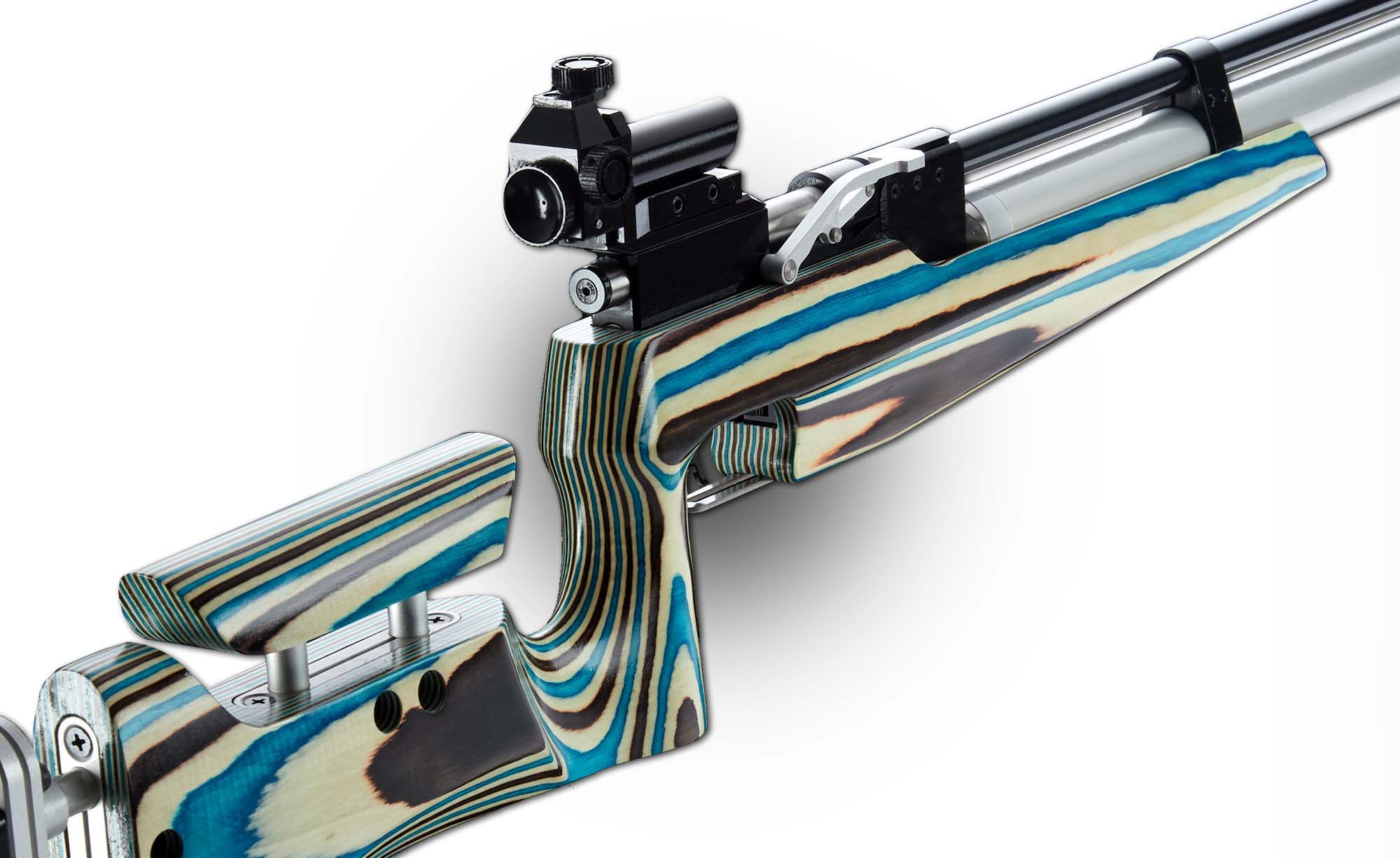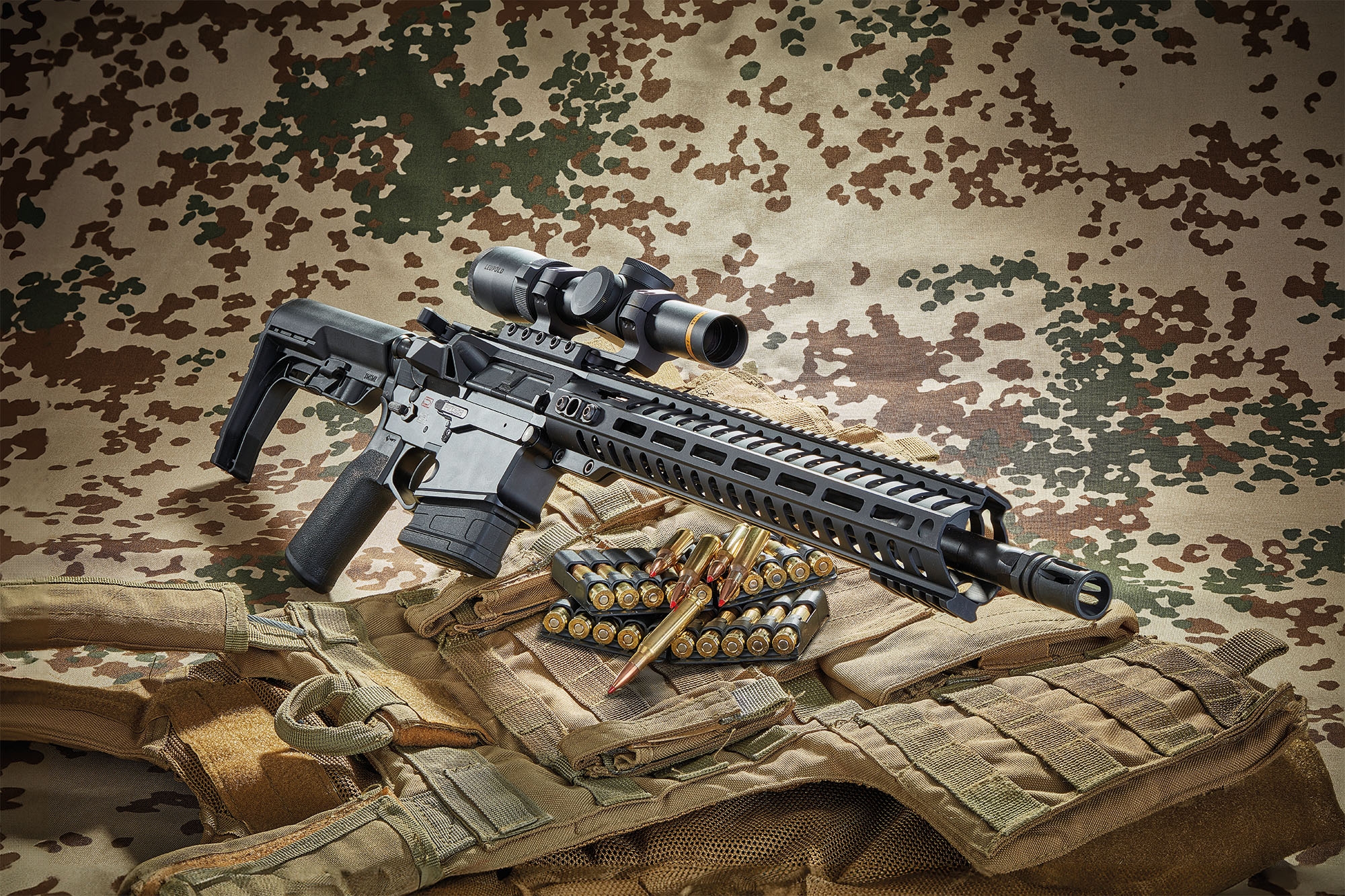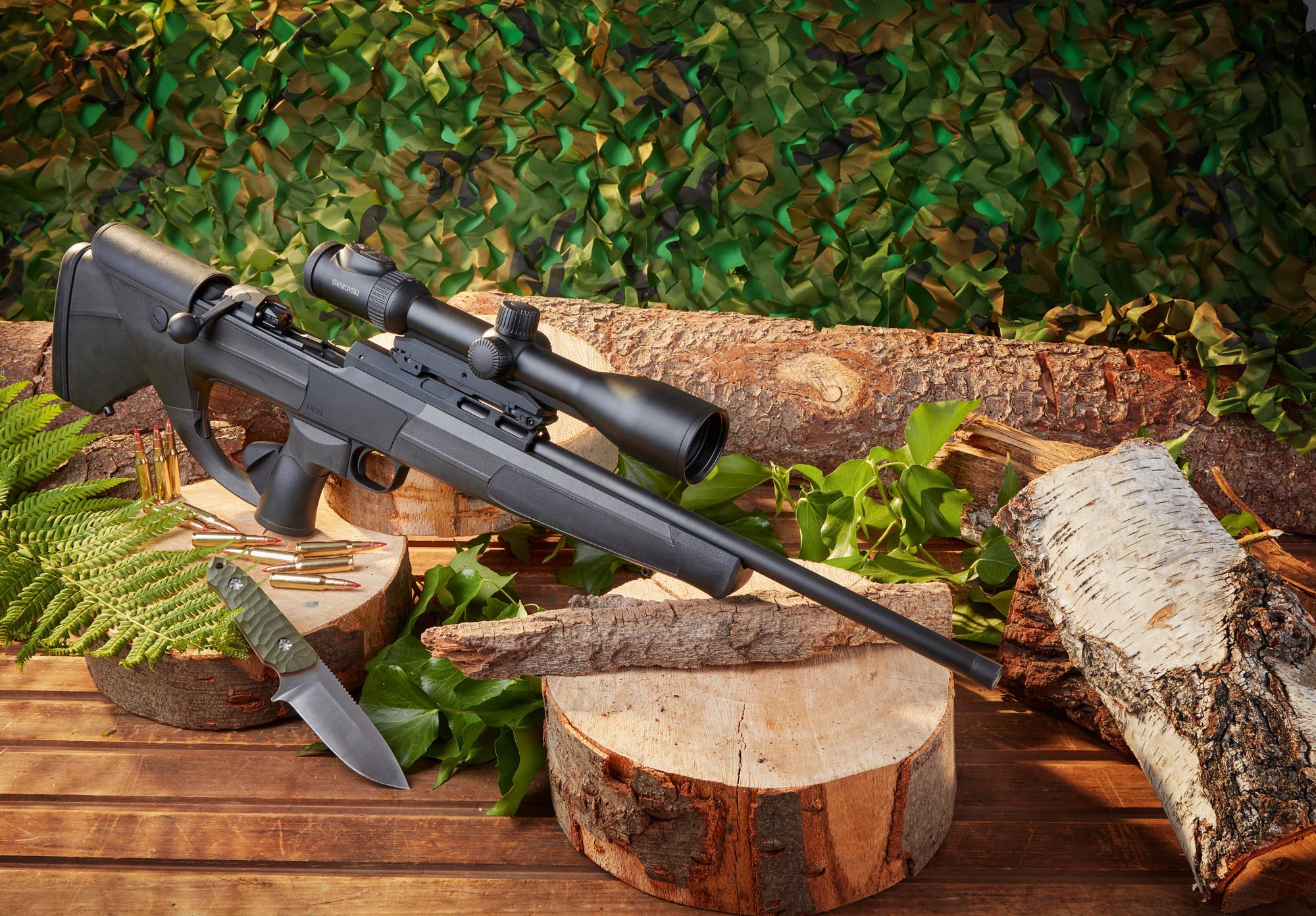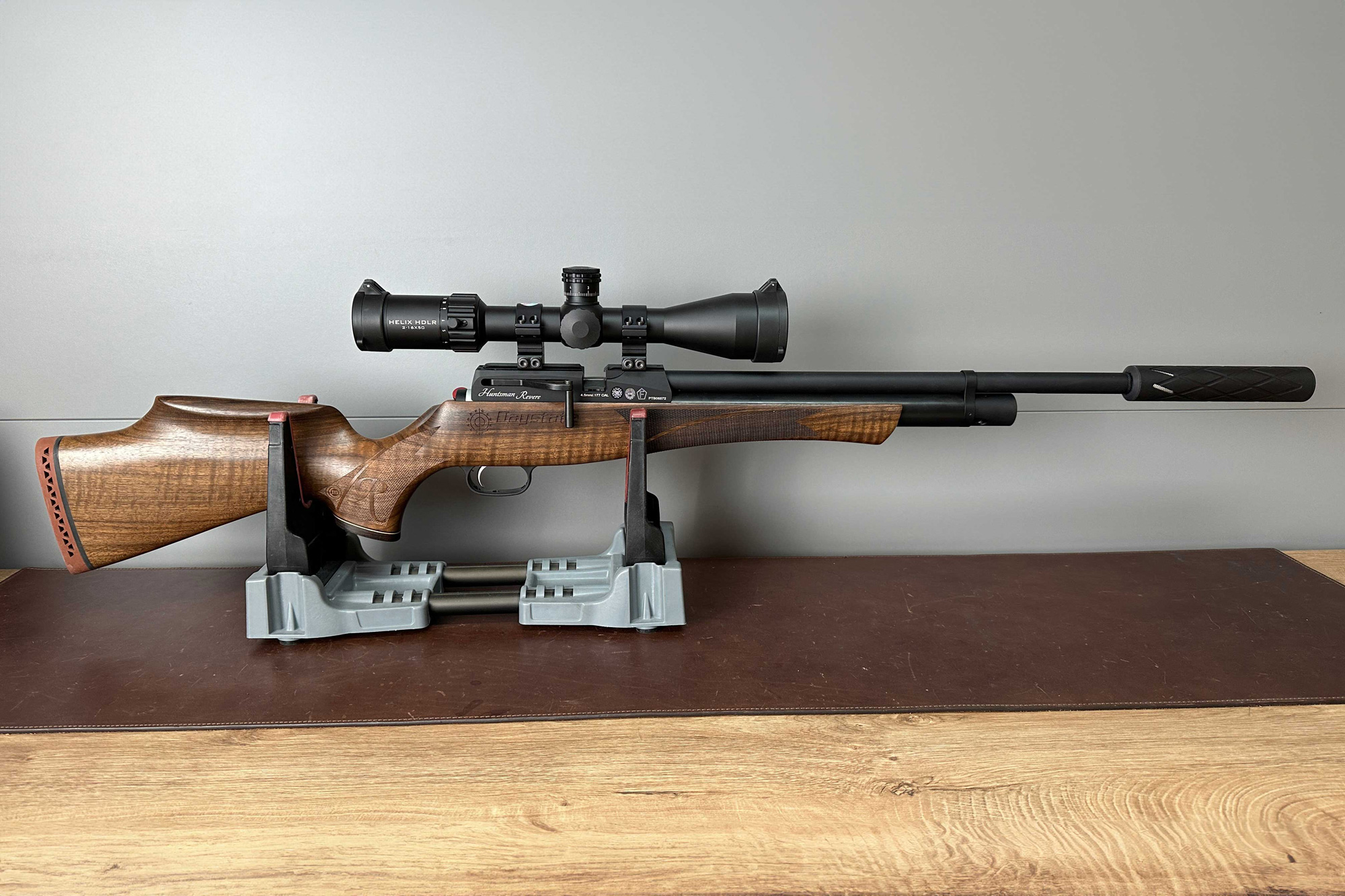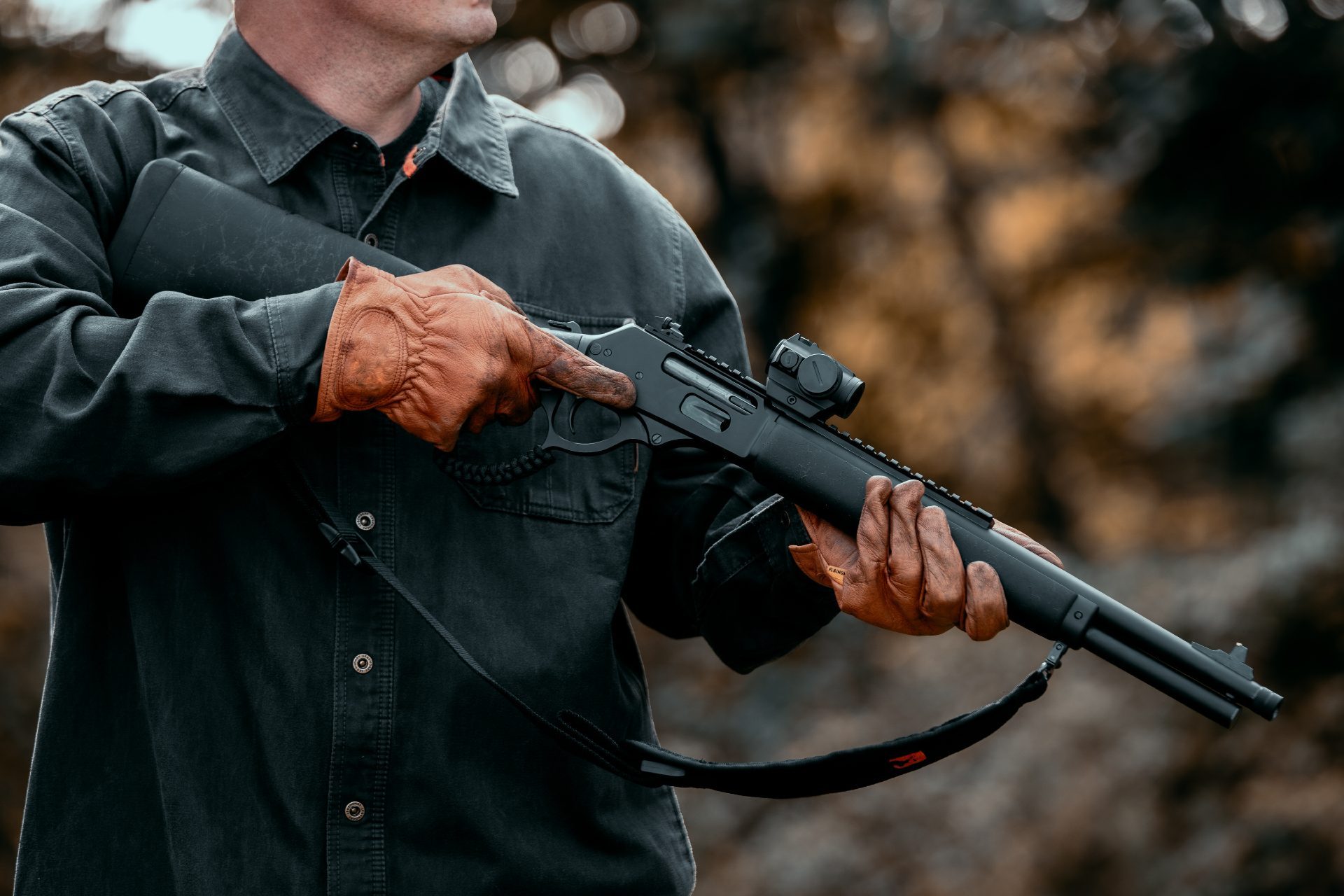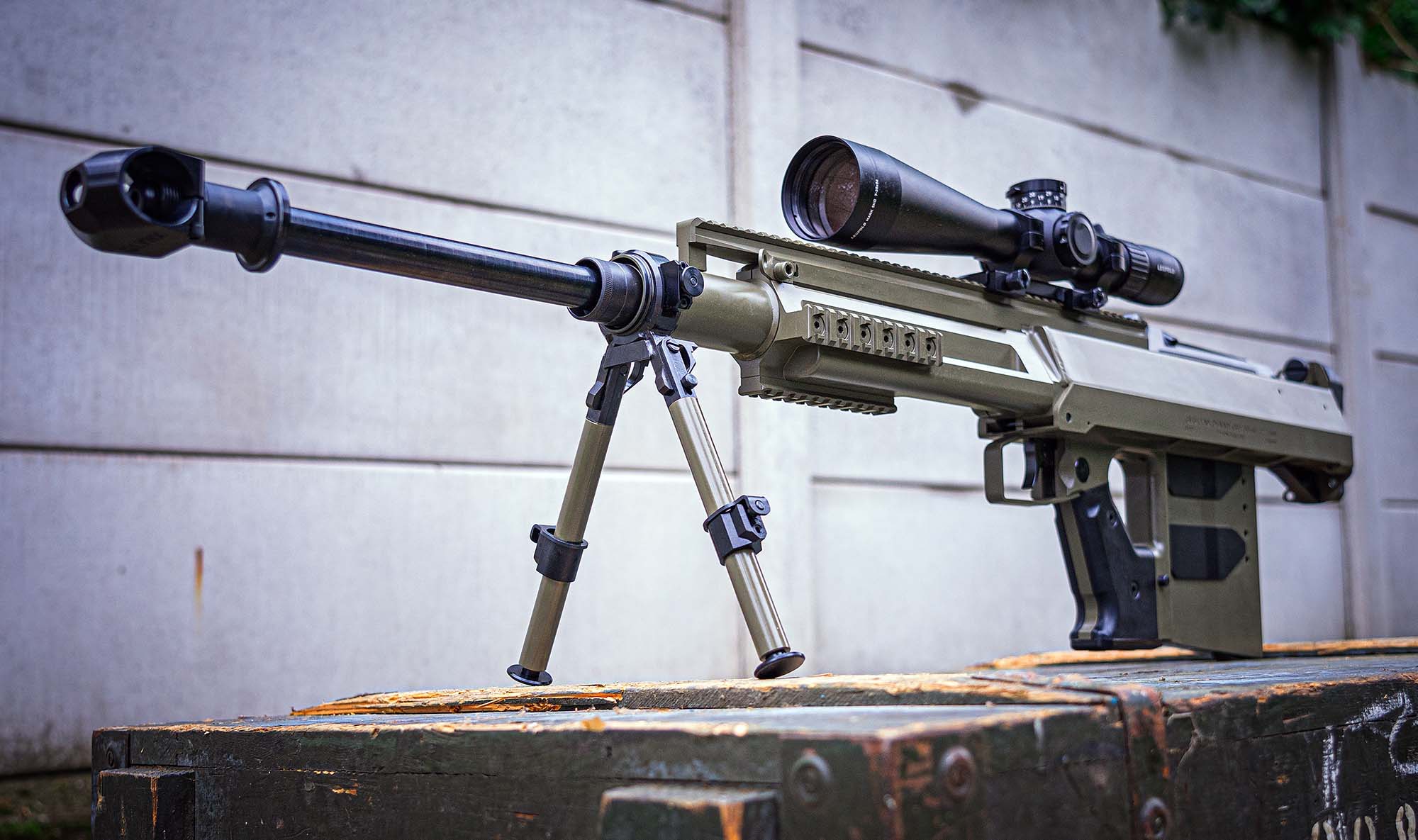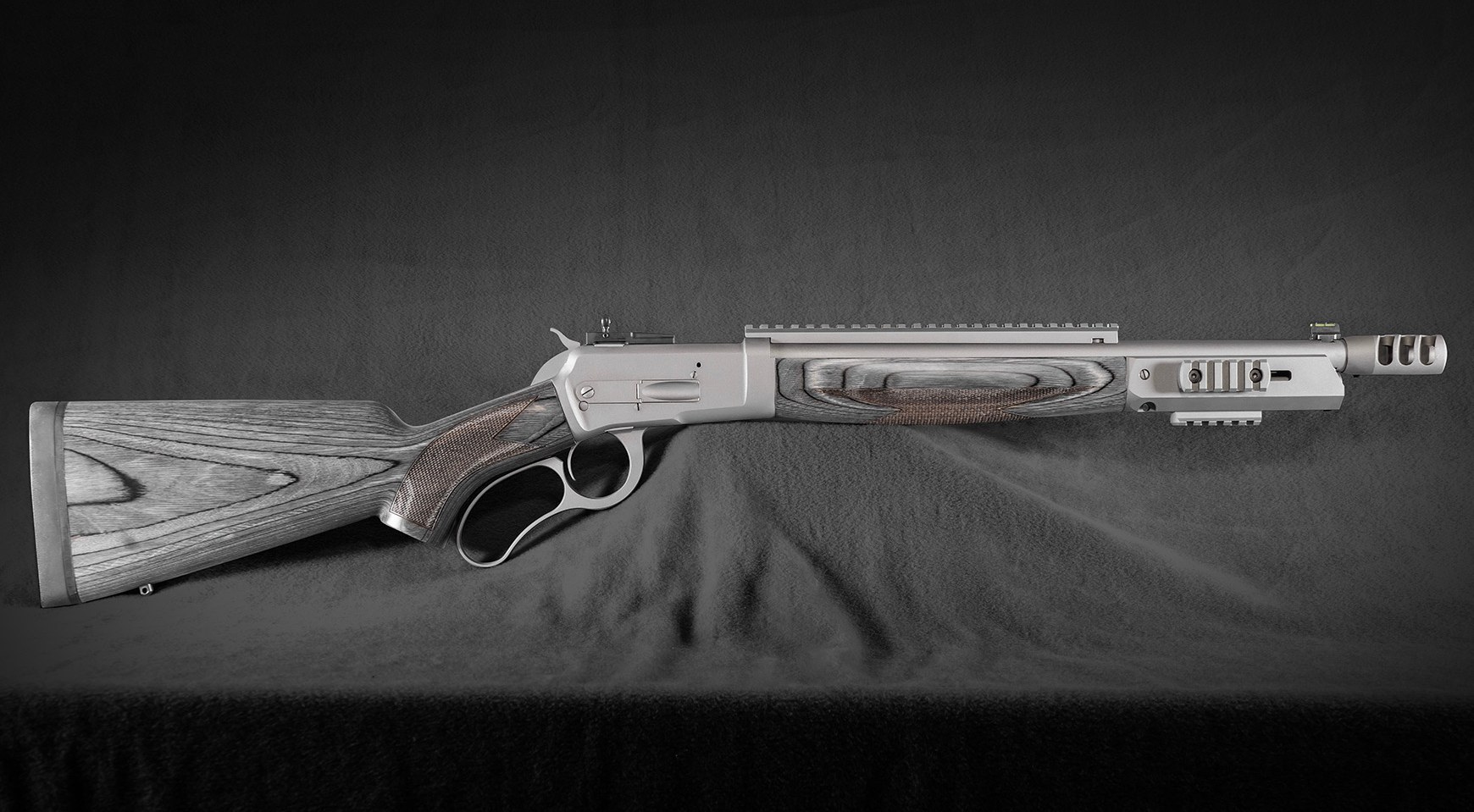Stag Arms is a newcomer on the European market. In the home country of the company, which moved from Connecticut to Cheyenne in the state of Wyoming five years ago, things look very different: the company, which originally specialised in AR-15s, was founded back in 2003 and has been firmly established in the hunting, sports and home defence market in the USA for years. In addition to accessories, AR-15s and AR-10s, the company now also has a series of bolt-action rifles in its range, the "Pursuit". In typical American style, Cheyenne is proud of the fact that Stag Arms' firearms are 100 per cent US-made. Whether every single part is manufactured in Wyoming remains to be seen, but Stag Arms has since been bought by Aero Precision, another US specialist for AR guns and parts. The "big" AR semi-automatic rifles in .308 Winchester and 6.5 Creedmoor are all labelled "Stag 10" by Stag Arms. This test specimen is a variant with the name suffix "Long Range".
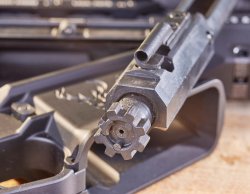
The Stag 10 semi-automatic rifle in detail
The semi-automatic rifle conceals its origins neither on the outside nor on the inside. It is a conventionally built AR-10-style gas-operated rifle with a rotating bolt and (non-adjustable) direct gas impingement through the gas tube above the barrel to the bolt carrier. The light alloy 6061 handguard allows the barrel to float freely. The bolt head has seven lugs and a confidence-inspiring wide extractor claw. Not quite as classic, but also found on various other "AR-10" manufacturers: instead of a single spring-loaded ejector protruding from the bolt face, the Stag 10 has two ejector pins.
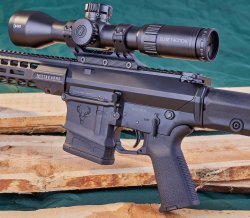
Nitriding protects the 51-cm (20 inch) barrel from corrosion. Inside it, a 1:10 inch twist (254 mm) sets the bullets in rotation. This fits well with the model designation Long Range; for the .308 Winchester, 254 mm is the shortest of the common twist lengths for this caliber. The comparatively short twist should easily cope with even the heaviest (actually: the longest) match bullets, which still fit into the ten-round PMAG magazine when loaded to a reasonable overall cartridge length. Stag Arms specifies 4150 CMV (chromium molybdenum vanadium) as the alloy for the barrel, which has been the common steel grade for "milspec" ARs in the USA for decades. Stag Arms also gives the bolt head and bolt carrier a nitrided finish for surface protection.
The controls. Without exception, the Long Range model features the absolute AR standard: a small standard charging lever, the typical fire selector with a 90-degree angle, a conventional bolt release and a classic manual forward assist. And all of this is also classically designed for right-handers only. Does Stag Arms have something against left-handers? No, don't worry, the exact opposite is the case. For the "South Paws" among the users, the company also offers the gun as a purebred left-handed model, complete with mirror-inverted ejection port to the left. What is missing from the equipment: as with almost all "match" ARs, regardless of the manufacturer, Stag Arms does not offer mechanical sights.
Stag Arms Stag 10 Long Range: processing and handling
The "fit & finish" of the test rifle made a good overall impression for an AR-10-style rifle, without claiming to be "super-premium" down to the last detail. The receiver and handguard showed evenly finished surfaces with clearly and evenly defined edges. The bolt head and bolt carrier were also neatly finished. The lettering is almost all rolled instead of laser-engraved and here too Stag Arms has done an attractive job in terms of craftsmanship. There were also minor compromises in the detail processing on the test sample, although there were no real upsets. Although there was some play between the upper and lower receivers, it was only very slight. In principle, you had to deliberately twist the receiver upper and lower against each other with a firm grip on the buttstock and fore-end to get some noticeable movement. If you held the gun very close and completely straight in front of your eye, you could see some light shining through between the upper and lower. The metal trigger guard, which is firmly pinned to the lower, rattled a little. The typical AR standard controls on the Stag 10 all did their job without complaint, but they are standard components and that's just how they look.
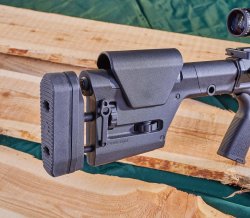
The polymer attachments in the form of the pistol grip, buttstock and magazine all come from the US company Magpul and there's nothing to complain about in terms of workmanship, the polymer is cleanly finished and the three Magpul components have been around for years. If any AR fans are not yet familiar with it, a quick word about the PRS buttstock, which has been very popular with match models for years and which, as an add-on part purchased from Stag Arms, also comes at a relatively high price. The stock is beautifully finished, ergonomically well shaped and allows the stock length and the height of the cheek rest to be continuously adjusted via two adjusting wheels. Even when extended, nothing wobbles or rattles, but there are no extension stages, position fixings or markings. In addition, the shaft weighs just under 800 grams and currently costs around 300 euros as an individual part in the accessories trade.
What we didn't like one hundred per cent in terms of handling is quickly listed. As is usual for very generously skeletonised AR fore-ends with cleanly defined edges at all openings, whether M-Lok slots or pure ventilation openings, such an aluminium handguard is not particularly pleasant to grip with the bare hand, and the one from Stag Arms is no exception. With the bolt open, the supplied PMAG only slipped freely out of the magazine well when it was pointing straight down. That's it, a long-range AR doesn't have to be ambidextrous and the Stag 10 is also available as a true left-handed action. Apart from that, the controls are ergonomically well designed, like those of all typical ARs, with the possible exception of the charging handle. And the manufacturer was kind enough to provide the Long Range version with its own "Two Stage" match trigger, which gave no cause for criticism. A trigger that releases crisply at 2,100 grams with a light, clean pre-travel and no annoying overtravel: something like this really belongs in every sporting or hunting AR.
Stag Arms – the range of models available
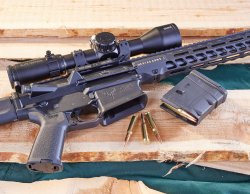
And if you want a Stag 10, but not in the current configuration of the Long Range model (.308 Win., black, right-handed, 51-cm barrel) – no problem: the cheapest Stag 10 costs $1,574.99 (MSRP in the US) in the form of the 308 "Classic" version for right-handers. The Classic essentially only differs from the test gun in three respects: the barrel is only 16 inches long (406 mm) with a correspondingly shortened handguard of 343 mm. A standard trigger replaces the match trigger and instead of the adjustable PRS buttstock, the buffer tube of the Tactical has a simpler Magpul MOE SL telescopic stock. The most expensive version is the "Long Range" as a left-handed version in 6.5 Creedmoor with Flat Dark Earth Cerakote finish and 24-inch (61 cm) long stainless steel barrel made of alloy 416R. This version of the Stag 10 costs $2,349.99. The differences essentially relate to the two available calibres (.308/6.5), the color, barrel length, type of trigger and buttstock and, of course, whether it should be a right-handed or left-handed version. Currently, all 308 Stag 10 rifles have a nitrided barrel on carbon steel, while rifles in 6.5 Creedmoor calibre always come with a matt glass bead blasted stainless barrel. What about the interchangeability of parts with other manufacturers? In contrast to the AR-15, many manufacturers do their own thing with the AR-10. But according to Stag Arms, the dimensions of the upper receiver and its attachments are based on DPMS, but not the lower receiver.
The Stag Arms Stag 10 with the Bushnell Elite Tactical DMR3 on the shooting range
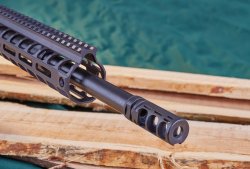
The Stag Long Range is not excessively light for an AR-10 and the compact compensator also does its job well. In combination, it shoots very mildly, muzzle flip and recoil are still present, but noticeably less pronounced compared to lighter .308 AR-10s without a compensator. Despite the compensator, the muzzle effects remained quite restrained: there was no heavy muzzle flash, nor was the compensator noticeable as an acoustic rattler. In terms of accuracy, the semi-automatic also had nothing to hide: the best five-shot grouping at 100 m was under 20 mm, putting the "Non Matchking" competition cartridge from Sellier & Bellot with the in-house Hollow Point Boat Tail bullet at the top. If one were to disregard a flyier, the match load from Hornady would have prevailed, with four rounds totalling 13 mm. In addition to the good stock and recoil damping thanks to the muzzle brake and gun weight, the responsive match trigger also played its part in the gun's inherent accuracy, which was easy to exploit on the target. In terms of function, there were no anomalies; in terms of operation, it would be nice if the empty polymer magazine could leave the magazine well with a little more punch at the push of a button.
Last, but not least: the scope. For the test, the rifle came fully fitted with a 3.5 to 21x magnification riflescope from Bushnell. Key features: 6x zoom, reticle in the first focal plane, click adjustment in mil, zero stop, 1,000 g weight, still relatively compact at 335 mm and of course with reticle and side parallax compensation. The ZF Elite Tactical DMR3 scored points straight away with its ease of use and clear (and pleasantly large) labelling of the turrets. The Bushnell also made a great impression right from the start in terms of optical performance and the very fine dot in the centre of the reticle facilitates pinpoint aiming. Overall, the G4P Precision reticle with "fir tree" reticle marks used here seems a little "too much" for pure shooting range use at 100 or 300 m, but the manufacturer actually developed this optic for the "Designated Marksman Rifle" field of application, i.e. for variable and considerably longer distances than is usual on local shooting ranges. In view of the very positive first impression, the recommended retail price of €2,219 brings you back down to earth; good optics also cost good money, that's just the way it is.
Stag 10 Long Range technical specifications and price
| Model: | Stag Arms Stag 10 Long Range |
| Caliber: | .308 Winchester |
| Capacity: | 10 + 1 cartridges |
| Overall Length: | 1,098 mm |
| Barrel Length: | 510 mm (20") |
| Twist Rate: | 1:10" |
| Trigger Pull Weight: | 2,100 g |
| Weight: | 4,850 g |
| Left/Right Version: | Right-handed (left-handed version optional) |
| Price (MSRP in the US): | $2,249.99 |
| Equipment: | Gas-operated rifle with direct impingement system and rotating bolt, barrel and bolt nitrided (QPQ), match trigger and stock. |
Conclusion: What the Stag Arms Stag 10 Long Range semi-automatic rifle can offer
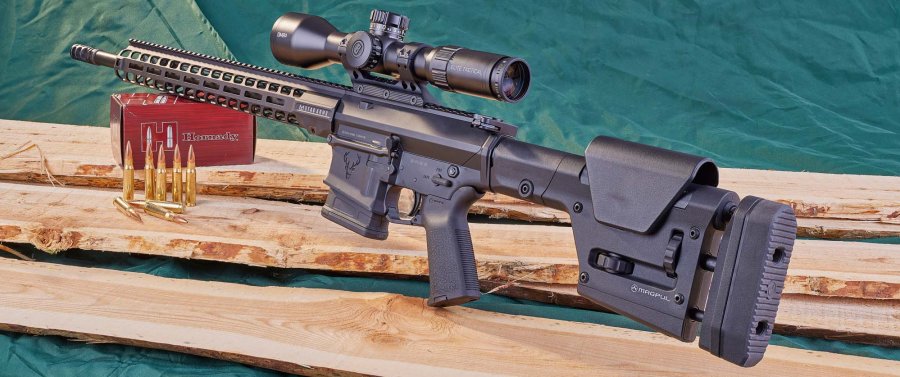
It is not difficult to give the Stag 10 a good report card. Thanks to the practical features such as the match trigger, the adjustable stock and the compact muzzle brake, the gun's fine inherent accuracy can be easily exploited on the target. Workmanship is also neat, and the bottom line is that this is a nice complete package for a semi-automatic AR-10 rifle. And for those who prefer to add details such as a match trigger or an expensive stock at a later date to suit their taste (and budget), Stag Arms also has more affordable entry-level models in its catalog.
| What we liked: | What we liked less: |
- Extensive sports equipment | - Standard controls |
| - Nitrided barrel and bolt | |
| - "Real" left version available |
Further information can be found on the Stag Arms website.



